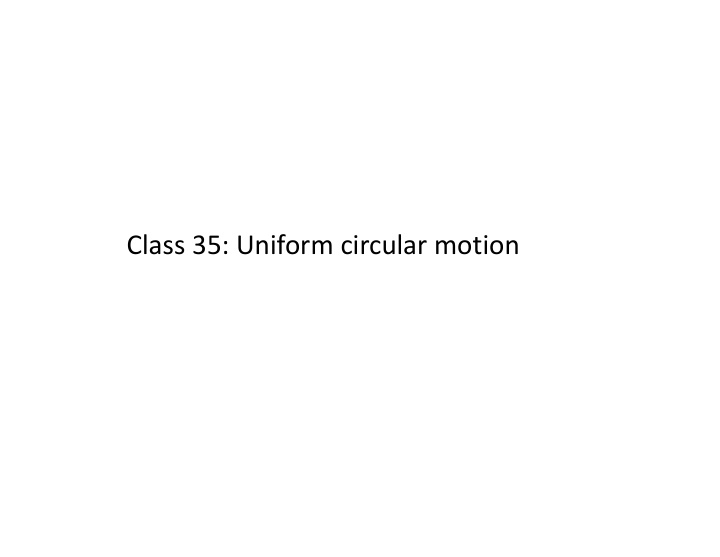



Class 35: Uniform circular motion
Acceleration in a circular motion a t There will be a tangential acceleration (a t ) causing the v change in speed. a c d v a t d t R The centripetal acceleration depends only on v: 2 v R a R There is centripetal acceleration for circular motion even when the speed is constant (circular motion with uniform speed).
Uniform circular motion Speed = constant. v d v a t 0 d t a c Acceleration is along the radial direction (centripetal R acceleration) 2 v R a R The net force must be acting radially inward to produce the centripetal acceleration (Newton’s second law).
Common misconceptions 1. Why won’t the object moves towards the center? – This won’t happen because the tangential velocity keep it in the circular orbit. 2. Centripetal force is a kind of force – Centripetal force is a broad term used to described the force that causes the centripetal acceleration. It is not a special type of force. Instead, radial component of any force (gravitational force, tension, normal force etc.) can be the centripetal force. 3. In a circular motion there is a centrifugal force to balance out the centripetal force so the object is in equilibrium – It is wrong to think of circular motion as equilibrium. In fact it is far from equilibrium and it needs an “unbalanced force” for the centripetal acceleration. There is no such thing as centrifugal force in an inertial frame.
Uniform circular motion v r v 2 r T 2 f v T f f T 1 You just need to know one, then all other three are known! Note: speed v does not need to be constant for circular motion.
Uniform circular motion – Example 1 A planet is running around the sun of mass M in a circular orbit of radius R. Determine the period of revolution. (This result is a particular case of Kepler’s third law that leads Newton to discover the Law of Gravitation.)
Uniform circular motion – Example 2 If the mass is running in a circle with an angular velocity , determine the angle . (This is called a conical pendulum.)
Uniform circular motion – Example 3 In a circular track of radius R, the road is banked at an angle . A car is running on it with a velocity v without slipping. Calculate the friction. v R
Recommend
More recommend